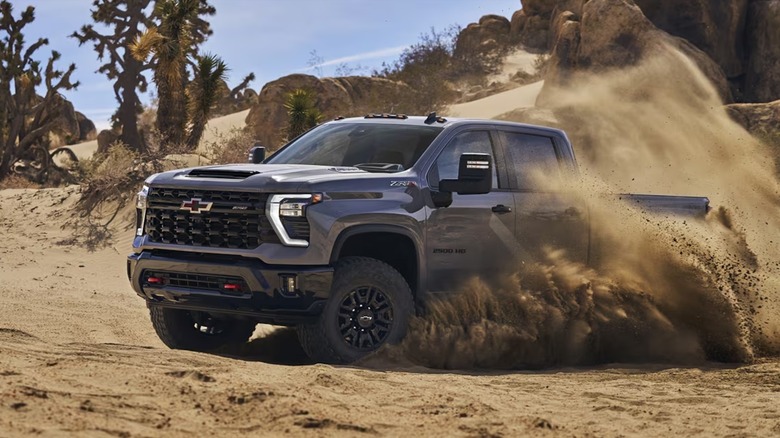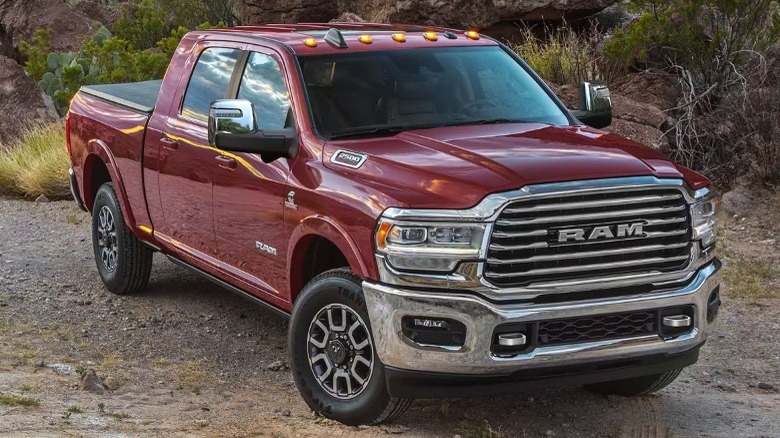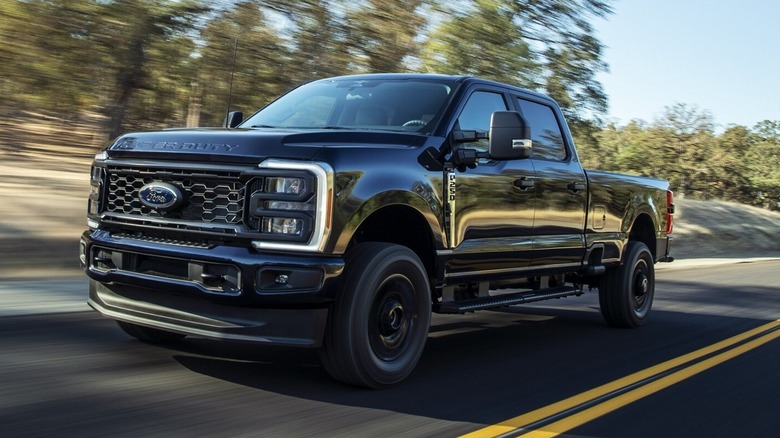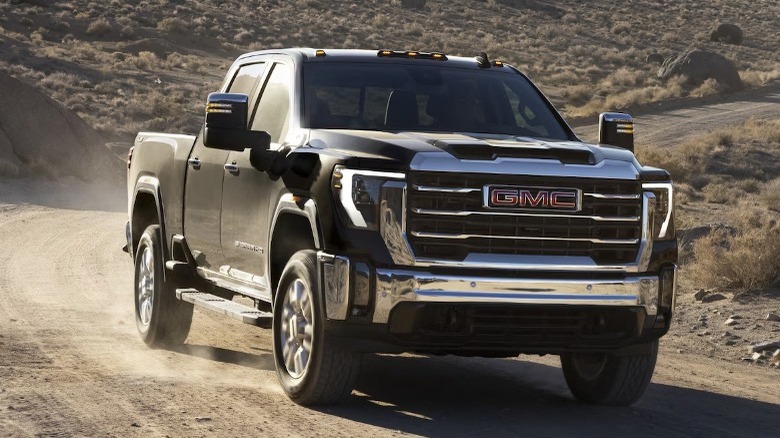Can You Remove The Catalytic Converters On Diesel Trucks, And What Happens If You Do?
Cars and trucks that burn fuels also produce emissions that are toxic to people and the environment. For that reason, catalytic converters have been added to modern exhaust systems to help transform pollutants from the engine into emissions that cause less damage.
A catalytic converter is essentially a tube with a honeycomb interior that is plated with metals like palladium or platinum which, as hot gasses pass through, encourage a chemical reaction to convert carbon monoxide into carbon dioxide. It also helps break down fuel that wasn't burned in the engine.
Automakers sell both gas-powered and diesel passenger vehicles with catalytic converters. However, gas and diesel engines work differently and produce different emissions. A diesel doesn't use spark plugs — it uses glow plugs and needs a higher compression ratio and a leaner air-fuel ratio to ignite. It also has a higher combustion temperature, producing poisonous nitrogen oxides and more particles than a gas engine. So the same converter and exhaust system won't work for both engine types.
How are diesel emission controls different from gas?
Since diesel engines create more soot and NOx emissions than gas engines, their exhaust systems are more complex. A modern system includes a diesel oxidation catalyst that converts carbon monoxide into carbon dioxide and breaks down hydrocarbons that didn't burn in the engine, like a gas-powered vehicle has. But, wait — there's more.
To meet increasingly strict tailpipe emissions standards, in 2008 light-duty diesel trucks like pickups were required to use additional filtering technology to trap soot and ash particles before they were released into the air. The diesel particulate filter (DPF) was invented by the Peugeot company to filter particles coming from the tailpipe, cutting those emissions by 80%.
The last leg of the emissions-scrubbing process is handled by the selective catalytic reduction (SCR) unit that works with a urea-based diesel exhaust fluid (DEF) to convert NOx into nitrogen, carbon dioxide, and water vapor. Diesel trucks that don't use an SCR have an exhaust gas recirculation valve to help reduce NOx by shunting the exhaust into the engine's air intake, to burn off leftover combustibles in the engine. With all of this going on under a pickup, taking off the catalytic converter is not a simple process.
What happens if you remove a catalytic converter?
Drivers might be tempted to remove a catalytic system because it is so complex: it has more parts that can fail if not maintained properly or from manufacturing or installation issues. One common issue that can affect diesel engine performance is when the DPF becomes clogged, restricting the flow of exhaust. Some drivers believe these systems reduce horsepower and torque and hurt fuel economy, so they remove them or install defeat devices to bypass them. That might have been helpful in older diesels that didn't use an SCR, which can actually boost fuel economy.
Some drivers take off the emissions controls to be able to 'roll coal' — meaning releasing large amounts of exhaust smoke into the air. According to the Environmental Protection Agency, removing or defeating even some of the controls can increase the amount of pollutants released. Completely removing the emissions system from a heavy-duty diesel pickup can cause that one truck to spew out as many particulates, carbon monoxide, NOx, and unburned fuel as 300 trucks that still have theirs. It can also make the engine louder, since the converter acts like a kind of muffler.
Why you shouldn't remove parts of the emission system
First of all, it's illegal. As the EPA reminded everyone in a memorandum in 2020: Section 203(a)(3)(A) of the U.S. Clean Air Act (CAA) "prohibits tampering with emissions controls, including those controls that are in the engine (e.g., fuel injection, exhaust gas recirculation), and those controls that are in the exhaust (e.g.,filters and catalysts)."
It can also void the warranty on the truck. On these grounds, the manufacturer might refuse to cover other, expensive problems that need fixing or replacing and would normally be under warranty. Taking off the converter or other components will, of course, cause a truck to pollute more. That is already bad, but it may also prevent the truck from passing a vehicle inspection in a state like California, meaning it is no longer street legal to drive.
Lastly, a removal that's done partially or poorly could even reduce an engine's performance, since it's factory-tuned to run with those controls and reads data from system sensors to run efficiently — which would defeat the purpose. Instead, look into more environmental and safer options for boosting your vehicle's performance, like a cat-back exhaust or cold air intake.



